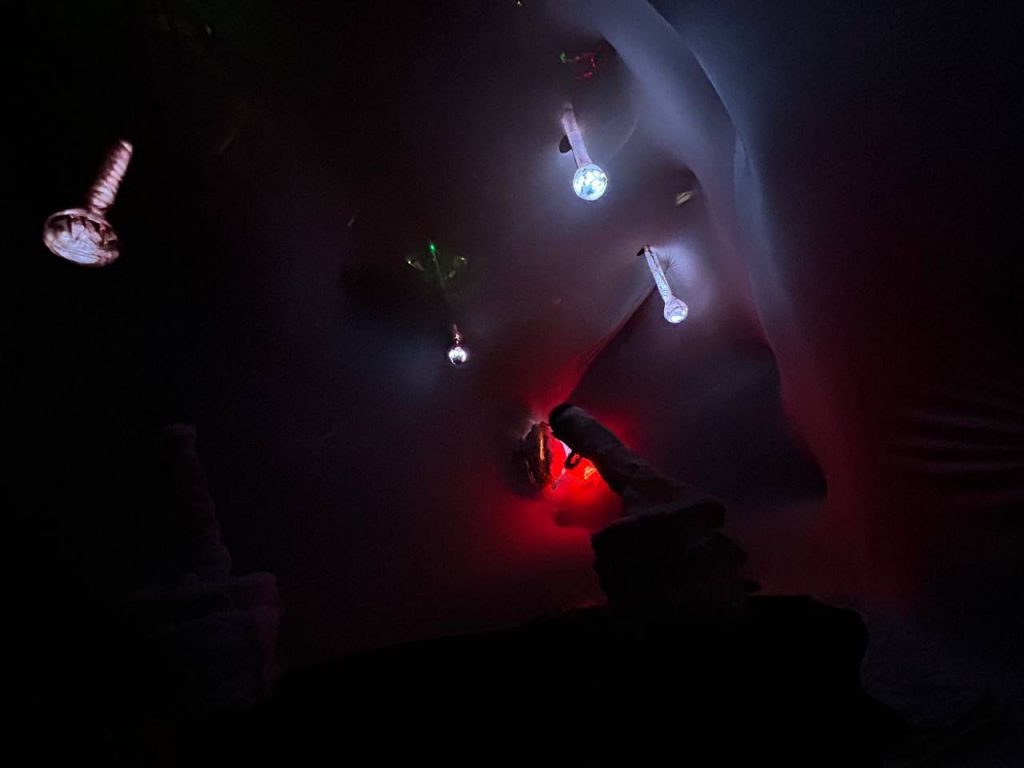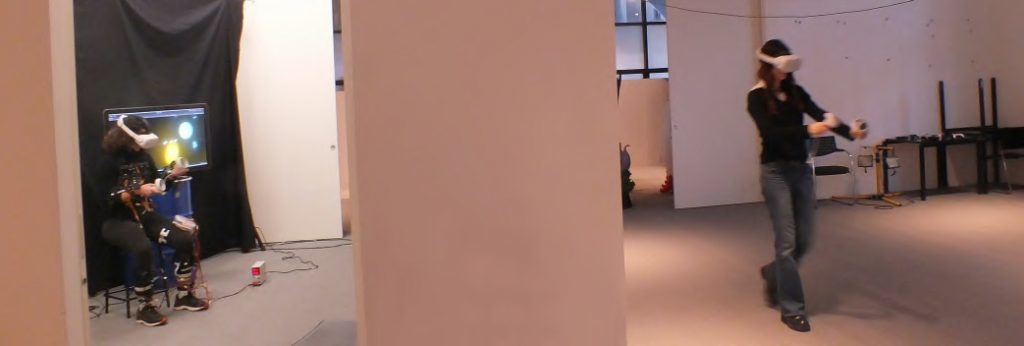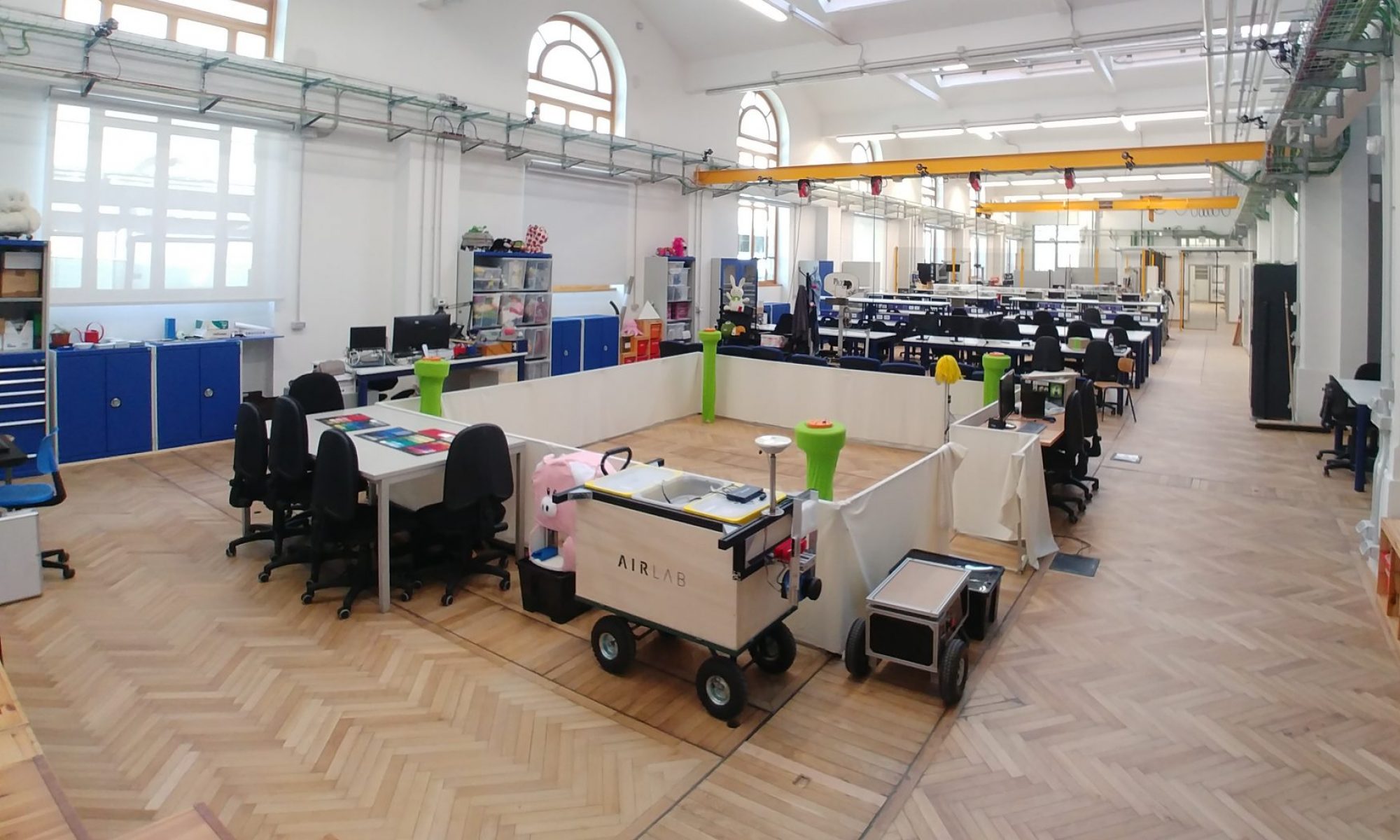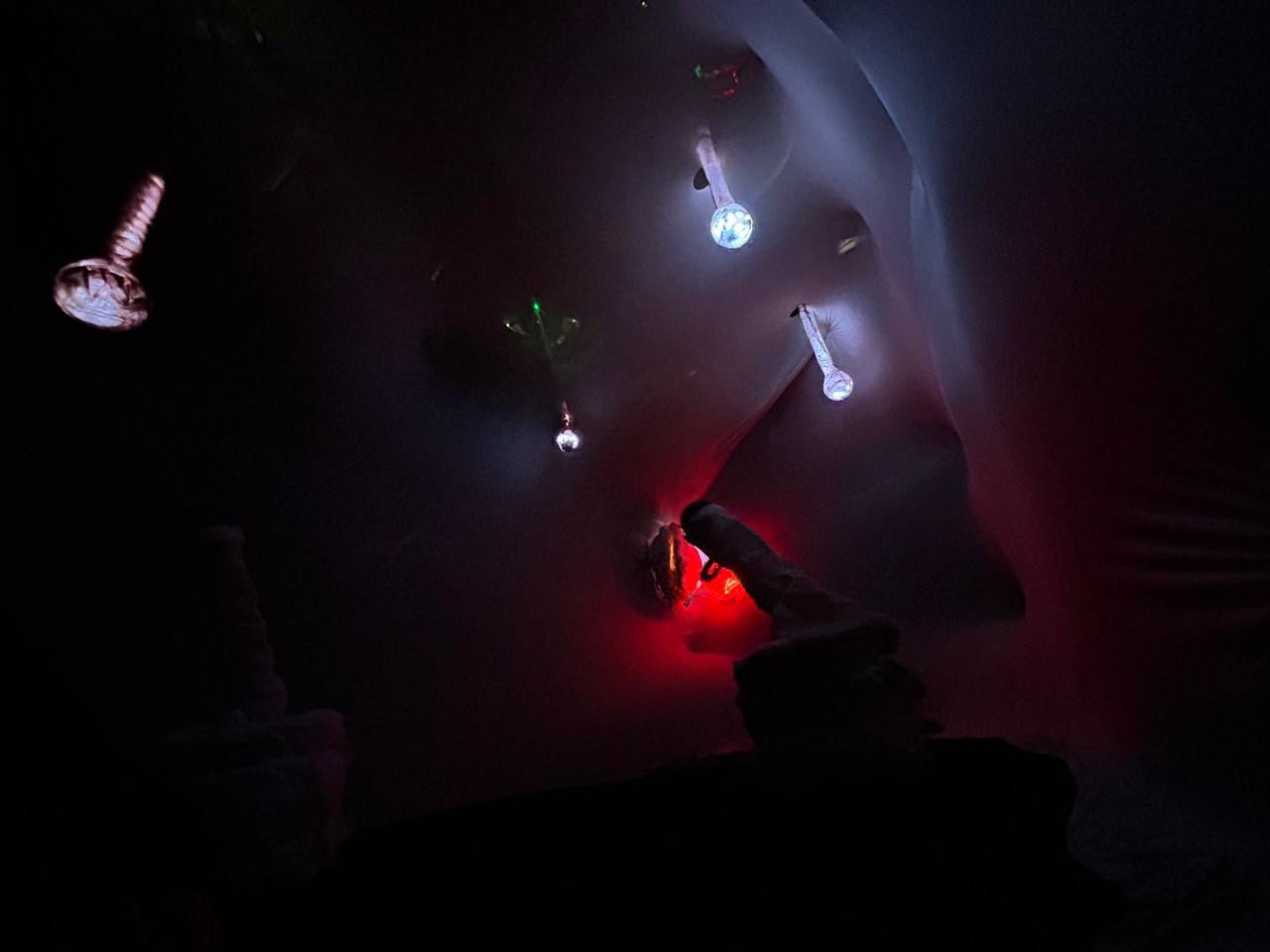
“The Room” places participants in a more demanding situation. Not only is the body of a room completely unfamiliar as a social being, ‘this alternate environment also introduces a completely new pattern to the nature itself of the interaction in which communication needs to be rebuilt from the ground up.
Conceptually, the setup is the same as for “The Game”, with two humans interacting through a digital filter: a Controller subject embodying a highly non-anthropomorphic avatar, and a Visitor subject interacting with this avatar in the same shared space. The core of the Room project is in the nature of the avatar: an enclosed space, designed to be an organic living being. In this context, it is not possible to start, as it is done in “The Game”, from specific motivations and structures for the characters involved in the interaction, namely, the Controller, embodying the Room, and the Visitor, that goes inside it.
In “The Game”, the two participants had clear motives and clear goals, a clear narrative. This could work because the context of interaction, even if the creature is new and strange, is still to some extent familiar and recognizable. With “The Room”, there is no initial, clear narrative designed from the start. The main point itself is to understand how an actuated space could become a social being, believable, authentic. Which could be its motivations? Its drives? And the same holds for the Visitor, entering the Room. Thus, the main objective of “The Room” project is to build the Room as a character, to understand how it could be an authentic other.
The Room is so radically different as an avatar from existing research that no valuable information was previously available from embodiment theory and results. Instead, to start building a framework to guide the design of The Room, we made a thorough review of theories on how humans interact with spaces (the Room IS a space), and on spaces as interactive installations. As a result, an initial framework was designed on the possible elements that could compose the Room, how the room could “express itself”, and what types of interaction mechanism with the visitor are designed for it.
Immediately after the framework was formulated, we designed a pilot study to test a subset of its elements, an experiment in the form of an interactive installation, displayed at the xCities expositions within Politecnico di Milano in Fall 2023.
PROJECTS
- Pilot

Developing a Room prototype in VR where prototyping is fast, with also the
creation of smaller physical modules as the first results are available. The different designs will aim at covering all the possibilities identified with the framework and identify the most promising ones.
Sensory translation will focus on haptic mediums coherently with the room body being a distributed system. Two initial virtual rooms and prototypes for haptic feedback suits have already been developed. Output of this phase became an interactive installation and was displayed at the xCities expositions within Politecnico di Milano in Fall 2023
Concept and VR development: Federico Espositi
Haptic devices: Amor Madhkour
Supervision: Federico Espositi and Andrea Bonarini
Read the Thesis here.
- The First Physical Room

The focus of this phase is on the experience of the “Visitor”, the user entering the Room and interacting with it, and on the design of the Room’s body and the expressive capability of its motions. The first complete physical mechatronic room is developed as a modular system. The robot is controlled in a wizard of Oz manner, testing specific behaviours to try to establish communication with the Visitor.
Project By: Sobhan Esfandiar (Design & Mechanics); Giuseppe Bonanno (Hardware and Development)
Supervision: Federico Espositi and Andrea Bonarini

